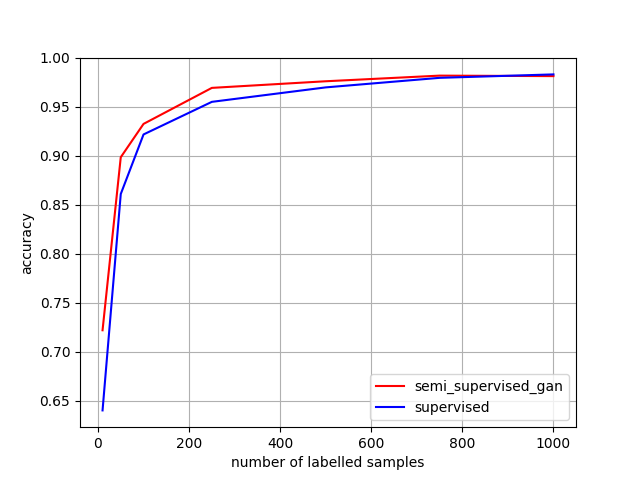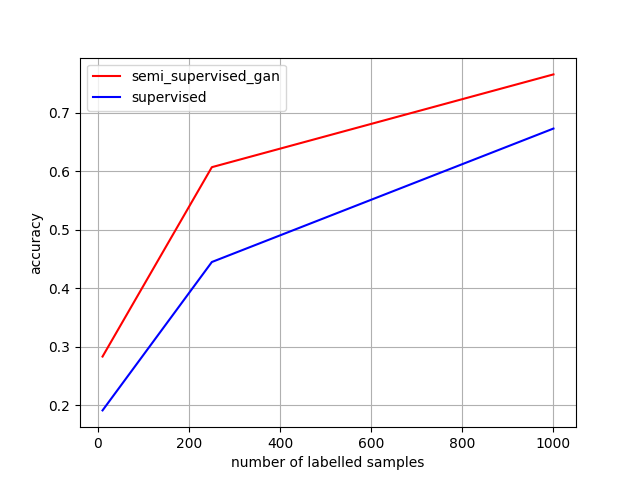- SSL with GANs is found to be useful when doing classification with limited amount of labeled data.
- The unlabeled samples can be used in a semi-supervised setting to boost performance.
- Even with limited number of labeled images, the SSL GAN is able to perform better than the supervised baseline.
- The loss function used is of the form specified in the paper "Improved Techniques for Training GANs" https://arxiv.org/abs/1606.03498
| No. of labeled samples per class | Accuracy - SSL GAN | Accuracy - Supervised |
|---|---|---|
| 10 | 0.7220 ± 0.0247 | 0.6403 ± 0.0203 |
| 50 | 0.8985 ± 0.0609 | 0.8610 ± 0.0127 |
| 100 | 0.9325 ± 0.0269 | 0.9218 ± 0.0067 |
| 250 | 0.9693 ± 0.0149 | 0.9550 ± 0.0088 |
| 500 | 0.9760 ± 0.0065 | 0.9698 ± 0.0034 |
| 750 | 0.9818 ± 0.0038 | 0.9795 ± 0.0026 |
| 1000 | 0.9813 ± 0.0010 | 0.9830 ± 0.0012 |
| No. of labeled samples per class | Accuracy - SSL GAN | Accuracy - Supervised |
|---|---|---|
| 10 | 0.3430 ± 0.0552 | 0.1808 ± 0.0245 |
| 250 | 0.6070 ± 0.1061 | 0.4288 ± 0.0229 |
| 1000 | 0.7655 ± 0.0389 | 0.6500 ± 0.0358 |
- Radar Image analysis : A Deep Convolutional Generative Adversarial Networks (DCGANs)-Based Semi-Supervised Method for Object Recognition in Synthetic Aperture Radar (SAR) Images
- Medical Diagnostics : Semi-Supervised Deep Learning for Abnormality Classification in Retinal Images
- In general, semi-supervised learning is useful when you have unlabeled samples (which cannot be made use of by supervised models) - usually when you cannot label large number of data - due to cost associated / unavailability of experts for the task.

